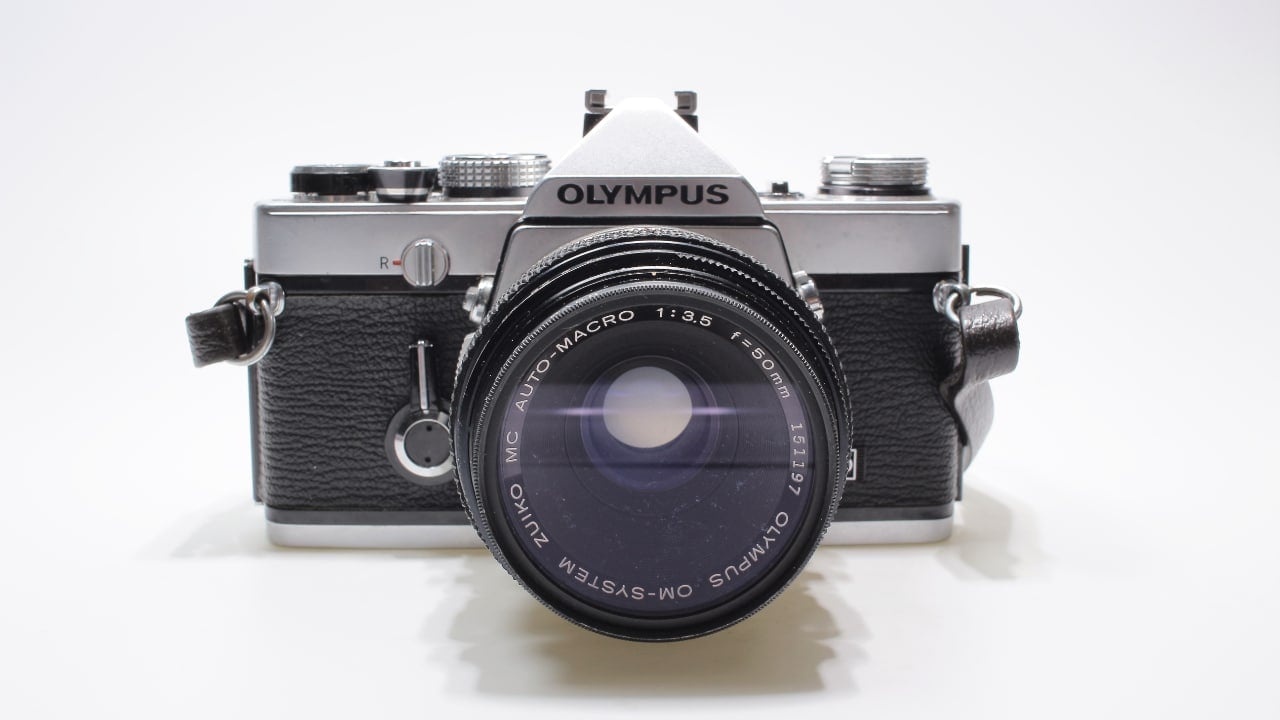
From a niche hobby to one that has the attention of the major camera manufacturers once again, shooting stills on film is undergoing a real revival. Here's everything you need to know about getting started/restarted in film photography.
Without running the numbers and doing any research, I suspect the Google search for “how to get started with film photography” has been on the rise in recent years. Much like vinyl, the once-doomed film format has come full circle, currently enjoying something of a renaissance. It may well have led you here to this article.
So, how do you get started in film photography? Having been on this journey myself, I have a few tips and tricks to streamline your introduction to a new, somewhat daunting format of photography. We’re going to take a look at the three main things – cameras, film stocks and developing.
Getting started in film photography: first things first
Before anything else, you’ll need a film camera. If you’ve ended up inheriting one from a family member or picked yours back up after some thirty-odd years of it sitting idle in the loft, congrats! You can probably skip ahead to the next section.
For those starting from scratch, you’ll most likely be buying secondhand. With the current renaissance, I wouldn’t be that surprised to see one of the camera brands release a new film camera sometime soon. In fact, Pentax has announced exactly that. Some Leica and Nikon models are still in production, but for brand new beginners, you should focus on second hand.
Tips for buying second-hand film cameras
There are two main sources you’ll be looking at when it comes to buying a second-hand film camera. There’s the online markets such as eBay or the in-person experience of walking into a camera shop and browsing.
eBay
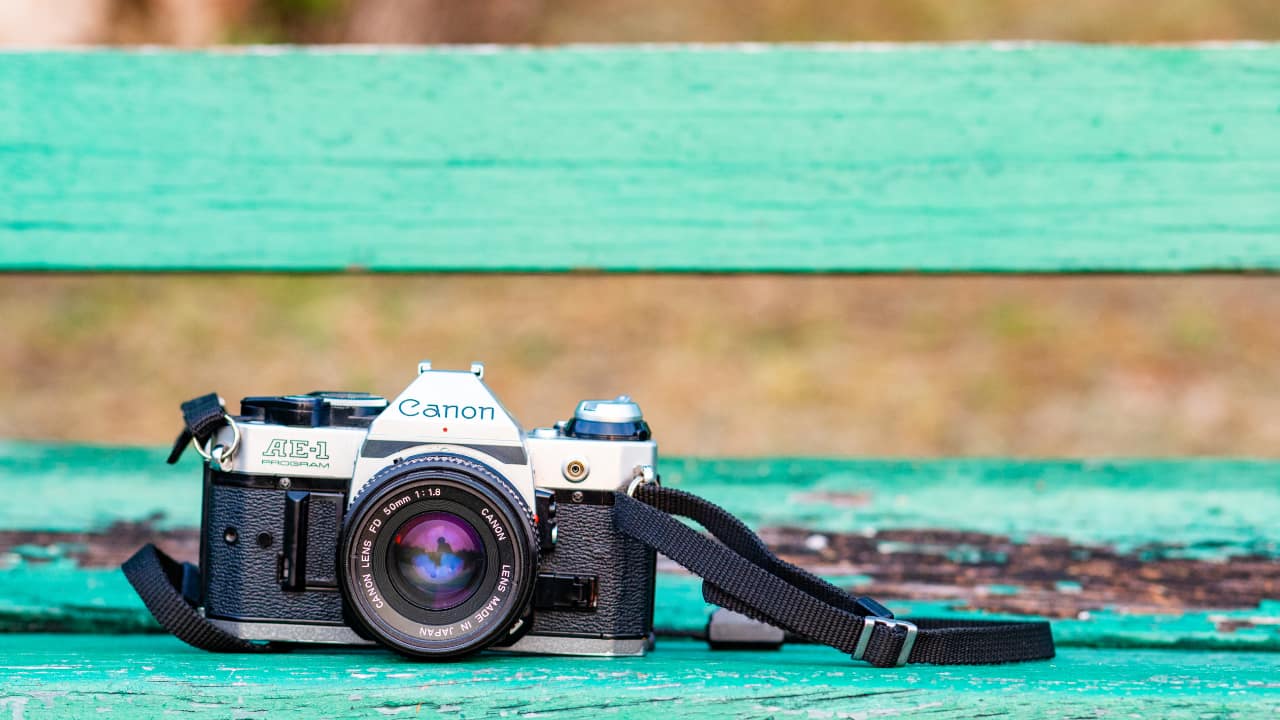
The iconic Canon AE-1. Pic: Shutterstock
A quick search of eBay will reveal a plethora of film camera equipment in various states and conditions. I picked up my Canon A-1 with two lenses here. There are definitely bargains to be had, but because some of this stuff is 50 or 40 years old (perhaps even older), you really do need to do your due diligence. Ensure you read the reviews of what other buyers have to say and only purchase from trusted sellers providing plenty of product photos and a detailed description of the item. There are certain sellers who deal solely in second-hand film cameras and can be more or less trusted.
Meanwhile, you may also get the odd chancer who’s thrown a camera body on because they found it in their parents' loft and don’t know what to do with it. It may be going very cheap, but you won’t know if it works until it’s in your hands.
Camera shops
Depending on where you live, there should be at least one or two camera shops in the bigger cities. If you can find one, then it’s worth having a look. Buying a second-hand camera in-store will almost certainly be a little more pricey than purchasing on eBay, but it does come with more assurances.
Not only will you know that the camera you’re picking up has been properly checked over by a professional and has, if necessary, been fixed, but you’ll be able to pick their brains for a little bit of knowledge and expertise about the camera.
Ask around?
You could always ask around your friends and family. As I mentioned at the start of the article, it’s plausible that there may well be a great film camera sitting up in someone's attic gathering dust. You’ll be met with, “What on earth do you want one of those for?” but you won’t know until you ask!
Popular beginner film cameras
Below, I’ve earmarked a few beginner-friendly film cameras you’ll want to consider.
Canon AE-1
Manufactured between 1976 and 1984, the Canon AE-1 is an iconic 35mm film camera that’s much loved to this day. It’s reliable and easy to get to grips with, and you’ll find plenty of options available on eBay. Lightweight and easy to handle, this camera gives you a plethora of great lens options and can shoot both manual or automatic – something that can be very useful for true beginners.
Olympus OM-1
If you’re on a small budget, the Olympus OM-1 is an excellent option for any beginner looking at getting into film photography. It remains one of the smallest and lightest 35mm single-lens reflex cameras on the market and is really easy to operate. Many people still use these today, and there should be plenty on eBay, as well as in your local second-hand camera store.
Nikon FM
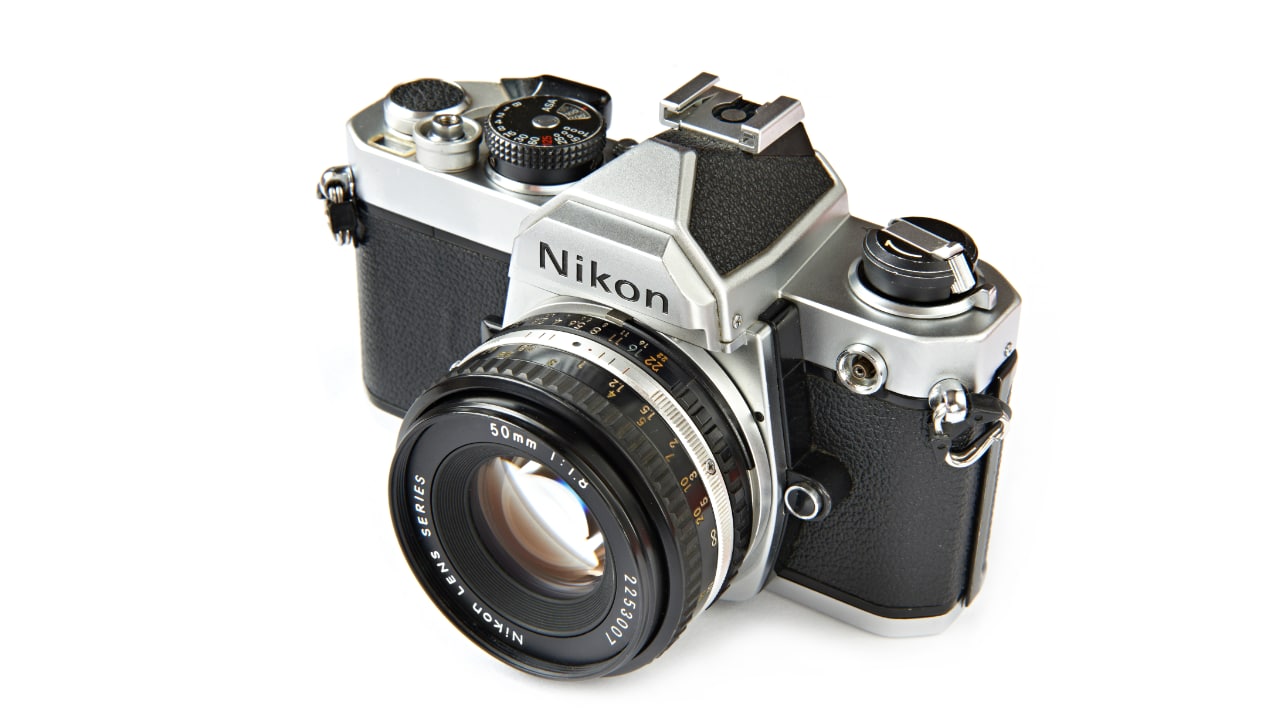
Vintage and affordable? The Nikon FM. Pic: Shutterstock
The Nikon FM has a beautiful vintage look and is incredibly affordable. You’ll find there are just enough settings and options to learn and grow with as you begin your film photography journey. The Nikon FM is also compatible with a wide range of Nikon lenses – their SLR and DSLR lenses are interchangeable. So, if you already shoot Nikon…
Pentax K1000
The Pentax K1000 is another legendary 35mm film camera – probably one of the most prolific and popular of all time. It’s often compared to the Canon AE-1 as a high-quality alternative thanks to its reliability and ease of use. Because it’s fully manual, beginners will be forced to learn the basics of photography (if you don’t already know them).
Mamiya 645
This differs from the others in the fact that it’s a medium format camera, not a 35mm format. More on that below. I’d always suggest starting off with 35mm when it comes to film photography, but if you are looking at a medium format, the Mamiya 645 is great. It’s fairly easy to handle and transport around, it’s got interchangeable lenses, and it gives you a few more shots per roll.
Understanding film stocks
With your camera purchased, you’ll need a roll of film to shoot. Film is the medium on which analog cameras record their image. It’s all physical and real – a huge part of the appeal of film photography.
How film works
Your film is light-sensitive. So, when the shutter opens, the light comes through the lens and burns onto the film roll. It’s a chemical process that physically sears the image onto the film. You then wind the roll forward with a mechanical lever, ready to expose the next frame.
I like to think of the film as your camera sensor. One of the main differences between film and digital photography is that with film, you have to shoot at the same ISO for the whole roll. Different film stocks have different sensitivities to light. For example, one may require you to shoot with an ISO of 200, while another could be 800.
Note – the key here is that film is light-sensitive. Whatever you do, do not expose that roll to any light outside of the camera!
The difference between 35mm and medium format
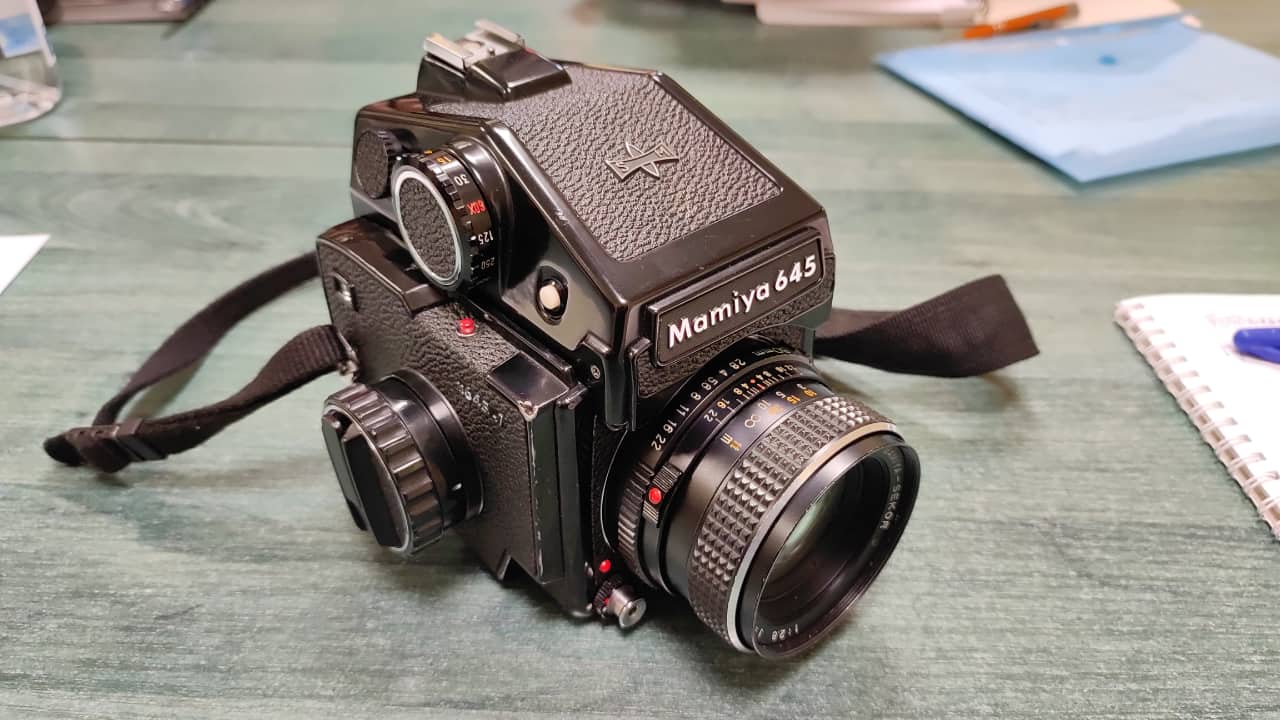
Moving on to medium format with the Mamiya 645. Pic: Shutterstock
As I alluded to with the Mamiya 645, there are different sizes of film stock to shoot. 35mm is the cheapest and most popular stock. It produces an image that’s 36mm wide and 24mm tall (a 3:2 aspect ratio). 35mm is popular because it’s so portable, affordable, and easy to use. However, there are some limitations. The negative is quite small, so you can’t enlarge the image too much without sacrificing image quality.
This is why some film photographers do prefer to shoot medium format. The film stock is more expensive, the cameras are bulkier and harder to operate, and you only get 10, 12, or 15 shots to a roll. Despite all this, medium format is loved because the larger negative size means there’s greater detail and resolution, providing more room for cropping and enlargement of images. They’re usually square (6x6cm) or rectangular (6x4.5cm or 6x7cm), with a 1:1 or 4:3 aspect ratio.
Yes, there is also large format film but we’re not going to get into that here as it’s nothing for beginners to worry about. If you’re starting out as a beginner, stick to 35mm film for the time being.
B&W vs. color negative
The other main choice you’ll need to make when it comes to film stocks is to shoot in color or black and white. As of this moment, color stocks tend to be more expensive but can be developed very quickly. Meanwhile, black and white stocks tend to be cheaper but take a little longer to develop. This is mainly a stylistic choice.
The right film for beginners
There really is no right or wrong film stock to start shooting as a beginner. However, from personal experience, I suggest choosing a cheaper stock to start with. It’s inevitable that when you start, mistakes will be made. My first roll didn’t load properly (user error); consequently, all of my photos were blanks! If you choose an expensive stock to start with, your mistakes will be pricier.
Film stocks can be found in the same places your film cameras are sold – both online and in camera stores. Depending on each individual shop, you may even find the odd roll of film still for sale in supermarkets or high street pharmacies.
I would say for color-negative film, take a look at something like Kodak Gold 200 or Kodak ColorPlus 200 – both cheap, easy-to-find film stocks. For black and white film, Ilford HP5 Plus 400 is a safe bet. This ended up being the very first roll I shot with (and bizarrely, I found it in an airport Boots store).
Developing 101
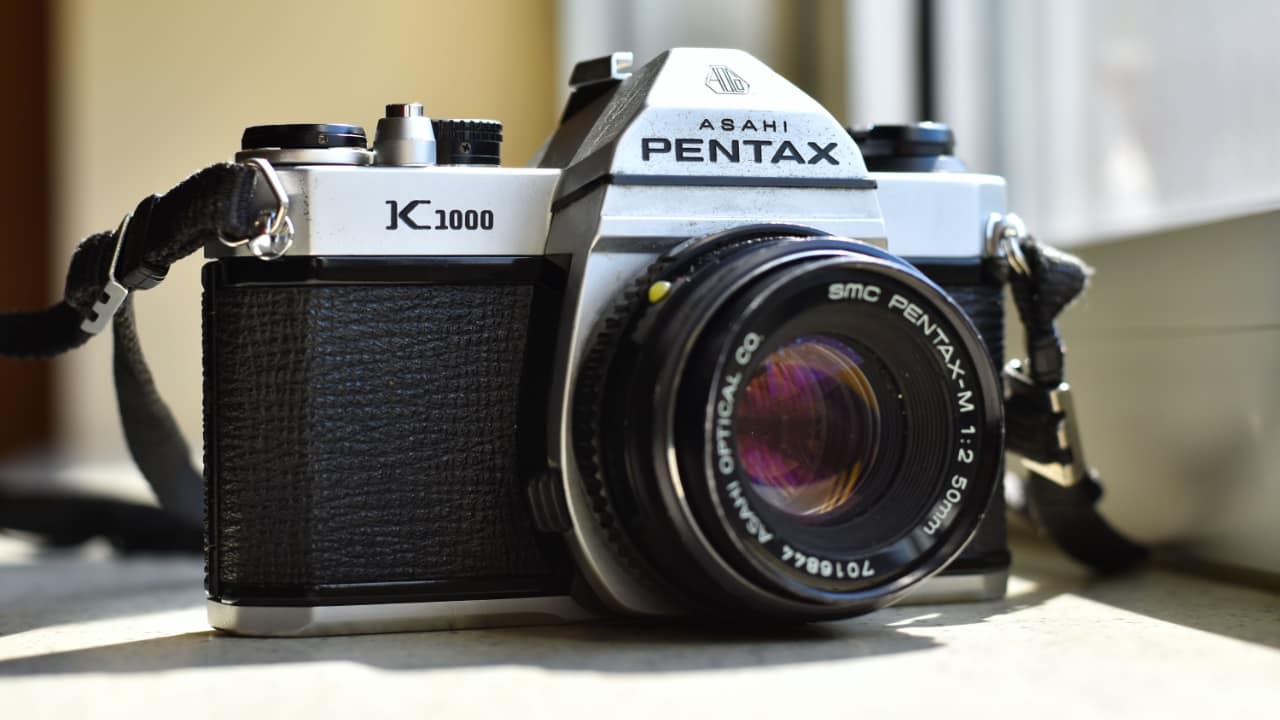
One of the most prolific and popular film cameras of all time; the legendary Pentax K1000. Pic: Shutterstock
This is perhaps the part of the film photography process that doomed it when digital came along. Rather than the simplicity of pulling out an SD card and loading it onto your PC to view your (unlimited) photos easily, film photos have to be developed.
As you probably already know, film can be developed by yourself at home but it’s not for beginners. In fact, it would require a whole different article to get you up to scratch. For beginner film photographers, you’ll want to take your roll to a lab where it can be developed.
Nowadays, thanks to the digital revolution, it’s not as easy to have your film developed as it used to be. Some pharmacies may still offer the service, so it’s worth checking, but otherwise, a dedicated photography shop is your best bet. Services and price points do differ, so it’s worth doing some research and shopping around. You can either post your roll and have the scans delivered digitally via email, or go through the experience in person, including the ability to keep your physical negatives afterwards.
Tags: Production Featured Film


Comments